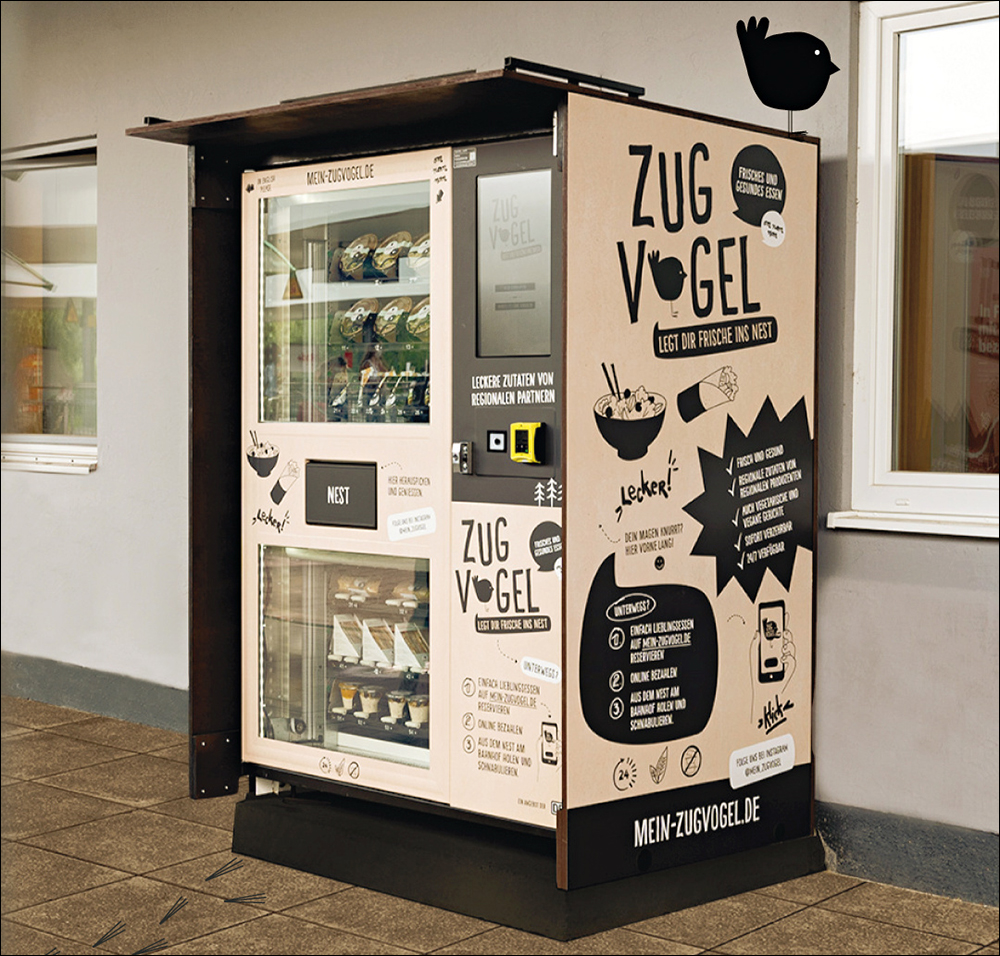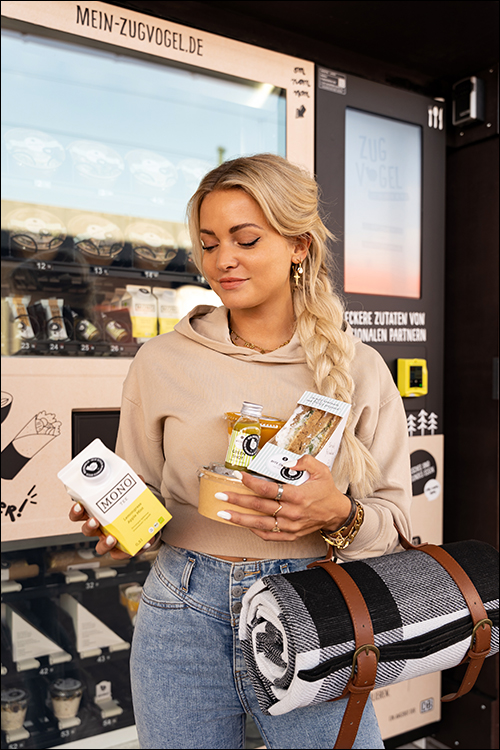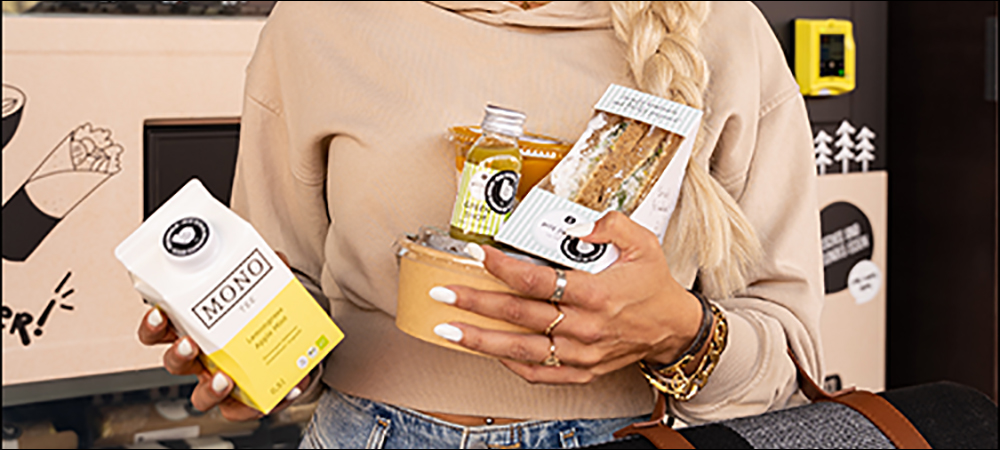Commuters who pass through two railway stations in Germany are using Internet of Things (IoT)-connected vending machines to access fresh, locally sourced food, such as sandwiches and snacks. The solution is being provided by global technology company Glory as a way to bring fresh food products from neighborhood vendors to their customers without requiring a manned store. The solution, which is being deployed by Deutsche Bahn, is an IoT-based cellular-connected machine that cools, stores and dispenses food for customers.
The Glory solution includes a Web-based shopping site that customers can use to pay for and reserve food on their smartphone before reaching the vending machine. Cellular connectivity in the machine enables it monitor its own conditions and address any changes that might occur, such as increased temperatures or approaching expiration dates.

Glory is a global technology company that provides payment systems such as cash-automation solutions, vending machines and automatic service equipment. Deutsche Bahn has branded the IoT vending machine solution as Zugvogel, and the system resulted from brainstorming at Glory’s Berne Innovation Centre about ways to improve on what the team calls “junk” vending machines—those that sell candy, chips or sodas. Companies have little control over the conditions of such machines, including when products were last stocked and which items might be out of date.
There is a growing demand from consumers for access to fresh local products, according to Dominik Cipa, Glory’s long-term innovation director at Berne. Customers are increasingly interested in food produced from “the guy next door,” he says, as well as convenient and contactless transactions that reduce queues and decrease the need for touching surfaces that could cause infection transmission.
Therefore, Cipa says, the center’s goal was to use vending machine technology for sustainability, as well as to support local businesses. The company also wanted the solution to enable customers to access fresh food any time of the day. “We wanted to help local producers sell food outside of business hours,” he states. Glory’s Berne center intended to build a platform that would enable companies to use when selling goods to local customers. “We’re a tech company, not a food-selling company, so we wanted to provide the platform.” Selling fresh food, however, required a solution by which operators could view conditions in the machine in real time.
 Development took place during the past three years, and the engineers were unable to find any existing vending machine technologies offering IoT connectivity. Instead, Glory worked with a third-party provider and introduced several upgrades and features focused on fulfilling regulatory demands and functionality requirements. The resulting machines were taken live in September. One is installed at the Freising Rail Station, while the other is in Holzkirchen (both in the Munich area). Each machine has a temperature sensor and access to a cloud-based server via a 4G connection. Most of the intelligence is in the cloud, where the machine can access the data it needs.
Development took place during the past three years, and the engineers were unable to find any existing vending machine technologies offering IoT connectivity. Instead, Glory worked with a third-party provider and introduced several upgrades and features focused on fulfilling regulatory demands and functionality requirements. The resulting machines were taken live in September. One is installed at the Freising Rail Station, while the other is in Holzkirchen (both in the Munich area). Each machine has a temperature sensor and access to a cloud-based server via a 4G connection. Most of the intelligence is in the cloud, where the machine can access the data it needs.
During the pilot, Cipa says, the machines were stocked with salad bowls, wraps, drinks, and breakfast yogurt with fruit, and they are restocked every other evening. A stocker first inputs the identity of the compartment being reloaded, using an Android-based handheld device, then scans a QR code on each product assigned to that compartment (multiple units of a specific product, such as wraps). The collected data is stored in the software. The item with the earliest expiration date is placed in the front, while data about the product and the related compartment are stored in the system.
When customers wish to make a purchase, they can use their phone to access the webshop, which displays the products available in the machine. This can be accomplished whether a person is in an office or at home, before they reach the station. They can select the items they wish to buy and make their payment, and the buyer then receives a QR code on the phone. The item is reserved so that if there is only one unit left in the vending machine, no one else can purchase it.
Once pre-purchasing customers arrive at the vending machine, they can present their phone’s QR code to the machine’s scanner. The device accesses information linked to that QR code in the cloud-based server, then dispenses the appropriate products. The purchases and subsequent dispensing of products are stored in the software so vendors can view data at any time regarding how their products are selling, as well as restock any items that may be necessary,
Customers can make purchases directly at the machine, using a touch screen, though if an item they want to buy is reserved, they will be unable to select it on the screen (that item would be displayed in gray, both on the screen and in the webshop.) In the long term, there may be an app for regular customers to more efficiently place orders. “We want to look into serving two groups of customers,” Cipa says—regular commuters who make purchases often, as well as those who use the system only occasionally. Regular shoppers, for instance, could download an app and receive personalized service, such as easily reserving their favorite yogurt every morning.
Although inventory data is currently being collected via the QR codes, the company has investigated RFID technology’s ability to provide more automated data. For example, if goods had RFID tags affixed to them, a reader in the machine could potentially capture each tag ID automatically, without requiring a QR code scan. RFID would enable the system to automatically detect when a particular product has been dispensed.
“We looked at RFID,” Cipa says, “but there were some challenges with this technology.” For instance, the antennas could not easily detect the specific compartments in which products were being loaded. “So that is the limitation we currently have with RFID.” In the future, he says, he’d be willing to speak with RFID providers about potential solutions, but for now, “People seem to be very happy that these products are available, so we are getting very positive feedback,” from customers and sellers alike.
The pilots are slated to extend for 12 months, Cipa reports, and developers hope it will transition into a permanent deployment. Once those systems are working well, the goal is to roll out the machines at other Deutsch Bahn sites, as well as to retailers and other customers. As part of that effort, the Glory team intends to continue seeking producers of local food that is sustainable and fresh. The system also provides product information to consumers, such as ingredients. allergens and sources.
The system will operate in two models. Companies can buy the machines and related software, then manage them while renting out the compartments to other vendors. Alternatively, Glory could maintain ownership of the machines and sell products within the slots for a third party. Glory chose to work with Deutsch Bahn in these early stages, it says, because the rail company offers multiple public sites and had an interest in selling fresh local food. “It was a funny coincidence,” Cipa states. “They also wanted a machine to sell fresh food, so for both of us, it’s a good fit.”


